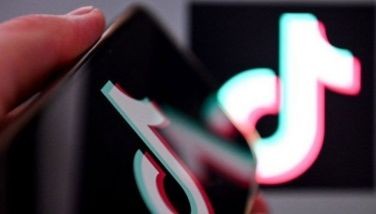Rapid innovation key to success in mobile data services, says Nazareno
March 14, 2002 | 12:00am
Napoleon L. Nazareno, president and CEO of Smart Communications, Inc., said a compulsively creative mobile company has an edge over its competitors.
In a speech delivered recently at the annual congress of the world GSM Association in Cannes, France, Nazareno stressed that cellular operators need lots of creativity to develop a competitive edge.
Nazareno, the first Filipino to speak before the prestigious body, said that Smart, for example, launched 130 wireless services in the past two and a half years – or an average of at least one new service or a variant of an existing service every week.
These services ranged from breakthrough services, such as Smart Money, the award-winning electronic payments service linked to a mobile phone – to simple but engaging services, such as text quiz games and ring tones and logos from the latest hit films.
Most of these services are low bandwidth applications that are simple, quick to make, easily deployed and affordable to customers. All of them run on SMS, better known as text messaging, which is immensely poplar among Filipino users to GSM mobile phones.
"Don’t worry if some of the services don’t do as well as you’d like. What’s important is that you keep a steady stream of services in the pipeline and that you create an environment where the mobile phone is used for a variety of purposes," Nazareno said.
"The choice of SMS (as the technology platform) was a no-brainer. With Filipinos so much into text messaging, SMS-based services gave us instant access to a huge market," he added. The number of GSM users in the Philippines now exceeds 11 million.
When Smart launched its GSM service in April 1999, the company set for itself the goal of attaining the leadership in wireless data using SMS. This strategy made it possible to achieve three key objectives vital to the future development of wireless services.
First, SMS made it possible for wireless data services to become a mass experience. Millions of GSM phone users were introduced to a world where handsets are multi-purpose terminals.
Second, this also gave operators an opportunity to build a network of service providers capable of generating content not only for the current generation of mobile phone technology – known in industry parlance as 2G or 2nd Generation, but also for higher technologies such as 2.5 G and 3G.
Third, mobile phone companies are able to test various business models that allow operators and content providers to make money while offering affordable services.
In a speech delivered recently at the annual congress of the world GSM Association in Cannes, France, Nazareno stressed that cellular operators need lots of creativity to develop a competitive edge.
Nazareno, the first Filipino to speak before the prestigious body, said that Smart, for example, launched 130 wireless services in the past two and a half years – or an average of at least one new service or a variant of an existing service every week.
These services ranged from breakthrough services, such as Smart Money, the award-winning electronic payments service linked to a mobile phone – to simple but engaging services, such as text quiz games and ring tones and logos from the latest hit films.
Most of these services are low bandwidth applications that are simple, quick to make, easily deployed and affordable to customers. All of them run on SMS, better known as text messaging, which is immensely poplar among Filipino users to GSM mobile phones.
"Don’t worry if some of the services don’t do as well as you’d like. What’s important is that you keep a steady stream of services in the pipeline and that you create an environment where the mobile phone is used for a variety of purposes," Nazareno said.
"The choice of SMS (as the technology platform) was a no-brainer. With Filipinos so much into text messaging, SMS-based services gave us instant access to a huge market," he added. The number of GSM users in the Philippines now exceeds 11 million.
When Smart launched its GSM service in April 1999, the company set for itself the goal of attaining the leadership in wireless data using SMS. This strategy made it possible to achieve three key objectives vital to the future development of wireless services.
First, SMS made it possible for wireless data services to become a mass experience. Millions of GSM phone users were introduced to a world where handsets are multi-purpose terminals.
Second, this also gave operators an opportunity to build a network of service providers capable of generating content not only for the current generation of mobile phone technology – known in industry parlance as 2G or 2nd Generation, but also for higher technologies such as 2.5 G and 3G.
Third, mobile phone companies are able to test various business models that allow operators and content providers to make money while offering affordable services.
BrandSpace Articles
<
>
- Latest
- Trending
Trending
Latest
Trending
Latest
Recommended


























